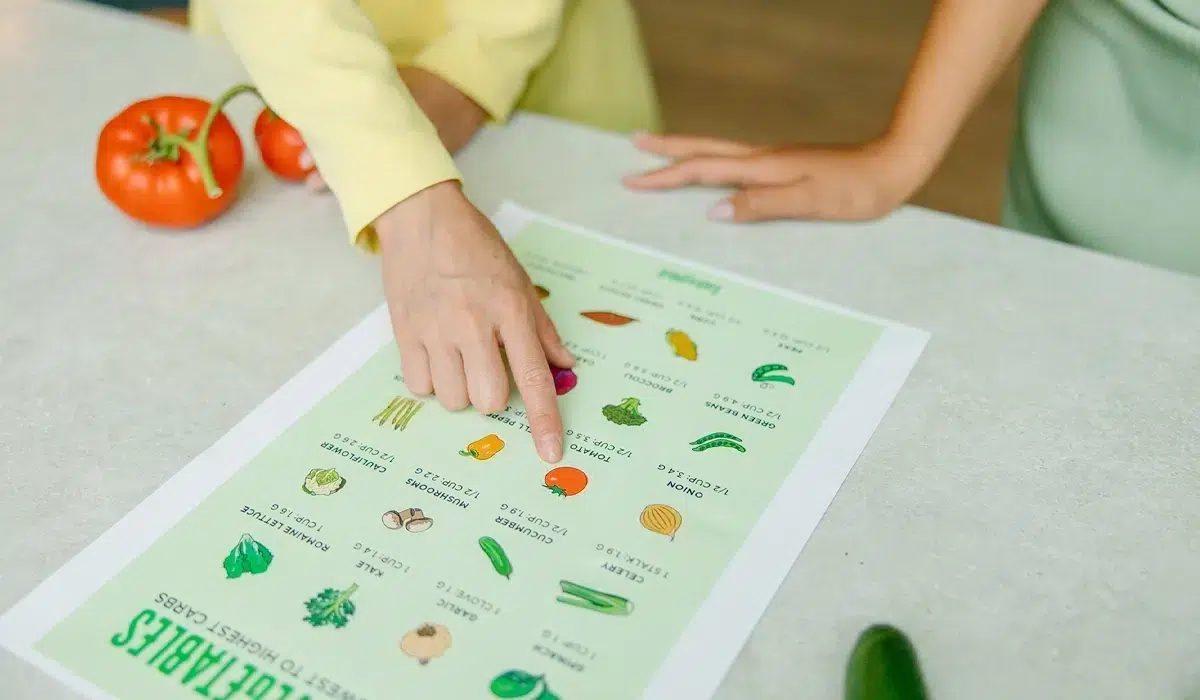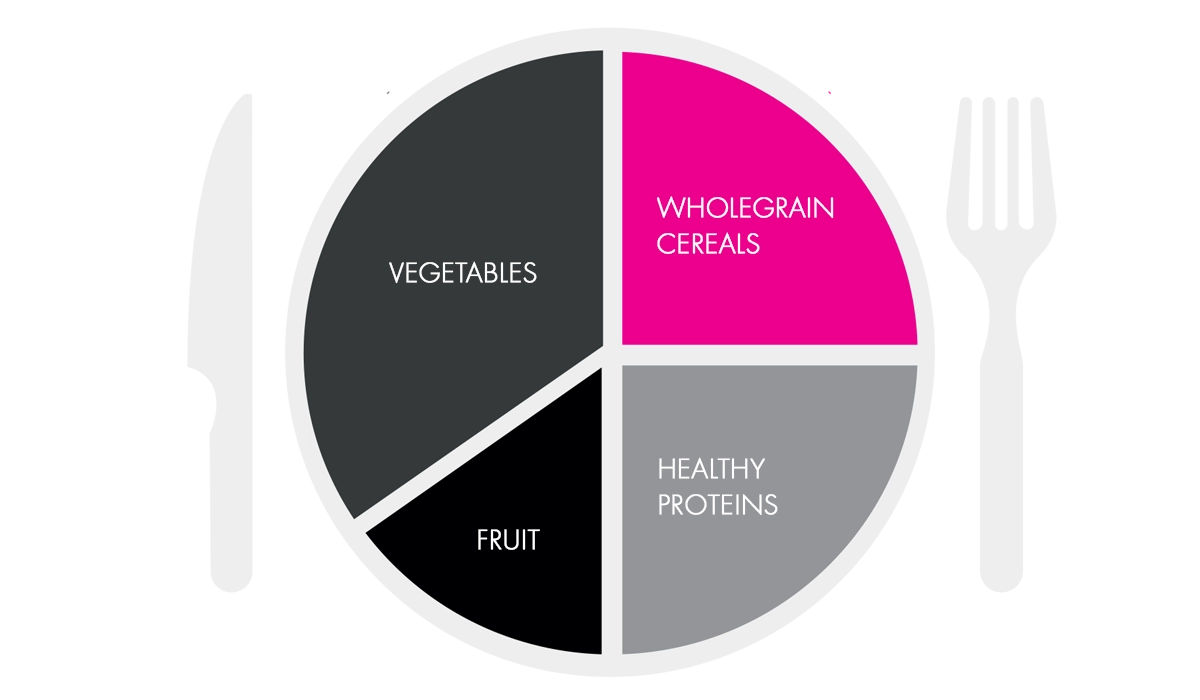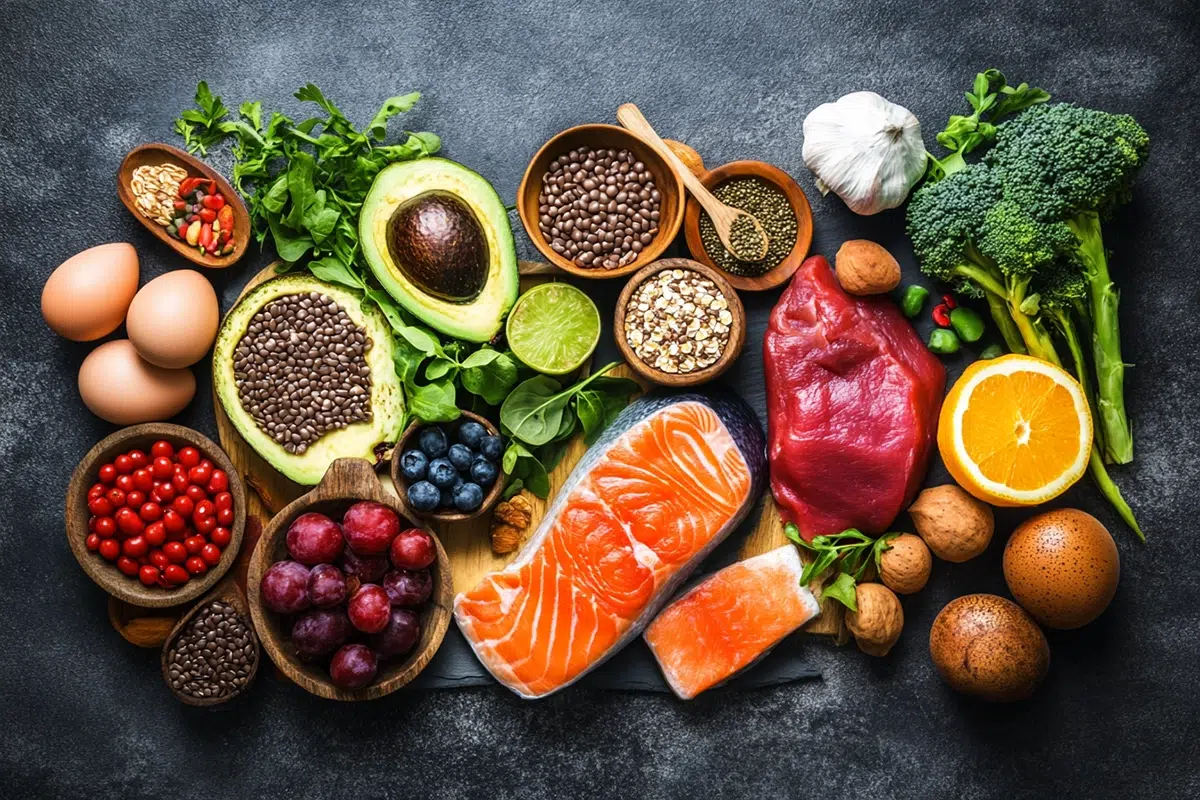Show summary Hide summary
What is a balanced diet?

A balanced diet consists of adopting good nutritional habits to ensure that nutrients are properly distributed in the diet.
This approach aims to meet the body’s energy requirements in terms of macronutrients such as proteins, fats and carbohydrates, while ensuring an adequate supply of essential micronutrients ( vitamins and minerals).
A balanced diet also means eating a variety of foods and adjusting portions to our daily calorie requirements. We can never say it often enough, but eating a balanced diet means eating everything and not abusing anything.
In other words, it’s a quality diet that aims to satisfy individual needs and help maintain good health!
Eating a balanced diet means understanding the calorie balance
Use the tool below to calculate your Base Metabolism (calorie requirements at rest) and your daily calorie requirement, depending on your Physical Activity Level.
For more information on this subject: Basic metabolism: Calorie requirement calculation
Other REGIVIA calculation tools
What are the principles of a healthy and balanced diet?
Based on the recommendations of the ANSES (Agence nationale de sécurité sanitaire de l’alimentation, de l’environnement et du travail – National Agency for Food, Environmental and Occupational Health Safety), we can establish the RDAs (Recommended Dietary Allowances) for each group of nutrients as follows:
- Proteins (12 to 16% of TAN*)
- Lipids (35 to 40% of the AET*)
- Carbohydrates (50 to 55% of TEA*)
*TEA = Total Energy Intake – Warning! This proportion is a benchmark for a defined proportion of calories. So it’s important to understand that it’s not a question of the weight of the food but of the calories.
The importance of variety in your diet
A diet is considered varied when the sources of nutrients are diversified on a regular basis. Eating the same foods every day carries the risk of deficiencies, but also the risk of creating a monotonous diet, which can reduce the pleasure of eating.
Dietary diversity also helps to minimise the potentially harmful effects of certain foods that could arise from excessive consumption. It’s important to remember that there are no good or bad foods, just different intakes and different effects depending on the quantity and context.
In fact, adopting a varied and balanced diet is already a large part of the road to better health.
A balanced diet means making healthy food choices
The key to a healthy diet is eating unprocessed foods.
Ready-made meals and highly processed products are incompatible with a healthy diet. Such foods encourage the desire to eat them again and again. To this end, they are very rich in sugars, fats and salt, which increase their palatability and the desire to eat more. On the other hand, they are low in fibre, protein, micronutrients and antioxidants, which make you feel full. Their low nutritional density compared to their high calorie content makes them foods with empty calories.
Finally, it’s essential to eat plenty of fruit and vegetables, which have undeniably positive effects on health and are unfortunately under-consumed.
So, how do you create a healthy, balanced and varied meal?

What is a healthy, balanced meal?
A meal is considered balanced when it provides all the essential nutrients (macronutrients and micronutrients) in the appropriate proportions.
However, a single meal is not necessarily responsible for meeting all our nutritional needs, as a balanced diet is built up over a longer period, such as days or weeks.
It is nevertheless preferable to maintain regularity and consistency in your nutritional intake, but it is also possible to easily compensate for a few deviations. The key is not to let these deviations become the norm, but rather to treat them as exceptions.
The healthy plate: What does a healthy and varied meal look like?
To eat a varied and balanced diet, you need to include fruit and vegetables, proteins and starchy foods at every meal. But this often seems easier in theory than in practice. For those who find the concept of the food pyramid too abstract, the ideal solution is to refer to the Harvard healthy plate, which illustrates in a simple way the composition of a well-balanced plate.
Here’s what a healthy, varied and balanced plate looks like:

- 1/2 plate for vegetables and fruit
The greater the variety and quantity of vegetables you eat, the better. Potatoes and chips are not considered vegetables. Eat fruit of all colours to benefit from a wide range of vitamins and minerals, each with its own health benefits. - 1/4 of the plate for wholegrain cereals
Eat wholegrain cereals (brown rice, wholemeal bread, wholemeal pasta, etc.). Limit refined cereals (white rice and white bread). - 1/4 of the plate for proteins
Choose fish, poultry, pulses and nuts. Limit red meat.
Avoid bacon and other cold meats. - Use healthy oils (such as olive oil or rapeseed oil) for cooking, salads and as a side dish. Limit butter. Avoid trans fats.
- Drink water, tea or coffee (with little or no sugar)
Limit milk and dairy products (1-2 portions/day) and fruit juices (1 small glass/day). Avoid sugary drinks.
In addition to a healthy diet, don’t forget to take an active walk for at least 30 minutes a day, because balance is as much about what you eat as about how much energy you expend!
Related topics:








